There is an opinion that toenail fungus is a purely aesthetic problem and cannot harm human health. This position is extremely wrong, because toxins produced by pathogenic fungi enter the bloodstream, causing intoxication of the body and can lead to very serious consequences. In addition, a sick person is a source of infection and can infect a large number of others.

Reasons for occurrence
Onychomycosis - a fungal infection of the nail plates on the feet or hands - is most often found in people who lead an active lifestyle: they visit swimming pools, gyms, spas, vacations in coastal resorts.
Arriving on the skin and nails of a person with strong immunity, the spores of the fungus are in a latent state for some time. Their transition to development and reproduction can occur under the influence of the following factors:
- weakening of the body's defenses due to viral diseases,
- diabetes mellitus, hypothyroidism and other endocrine diseases,
- stressful situations, excessive nervous and emotional arousal,
- varicose veins of the lower extremities, disruption of normal blood circulation,
- bruises, scratches, cracks and other injuries to the feet and nails,
- long stay in closed shoes, which leads to increased sweating,
- wearing synthetic leggings or socks,
- metabolic disorders, obesity,
- non-compliance with the rules of personal hygiene.
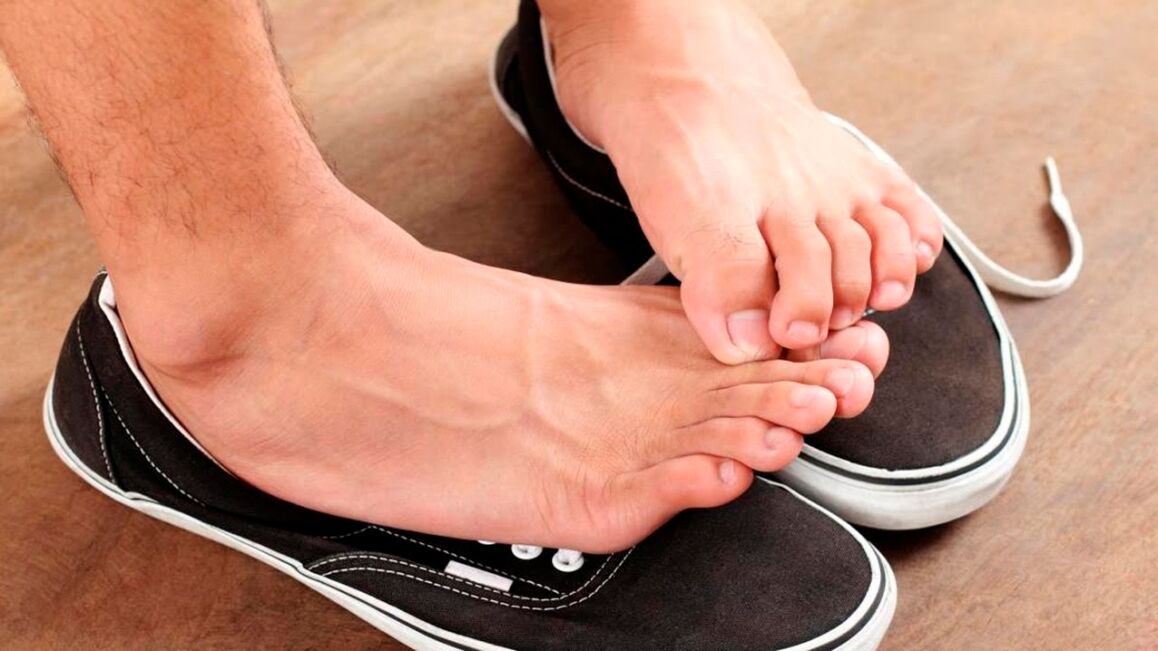
The risk group includes people with chronic pathologies of internal organs - kidneys, liver, biliary tract, as well as patients who take antibiotics for a long time, hormonal drugs, including birth control pills.
Types of onychomycosis
There are more than 500 opportunistic fungi that can parasitize human skin and nails.
The most common causes of onychomycosis are:
- Dermatophytes. These include fungi such as Trichophyton, Microsporum and Epidermophyton. The disease starts on the nail plates, and if left untreated, it spreads to the entire foot.
- Yeast Candida. In most cases, the infection occurs in places with high humidity - saunas, baths or swimming pools.
- Mold, whose main sign of defeat is a change in nail color - from dirty green to brown and black.
First of all, the fungus affects the nail of the thumb, and then move on to the rest, and at least to the little finger. All types of onychomycosis are accompanied by severe itching in the interdigital zone, tingling and an unpleasant putrid odor caused by the decomposition of fungal waste products.
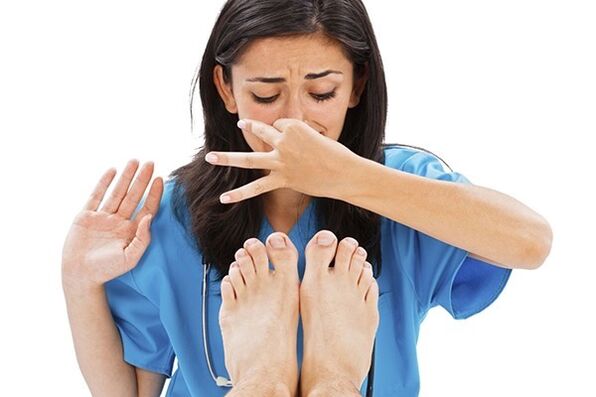
Stages of the disease
Any type of fungus requires drug treatment. Before scheduling an examination, the doctor must understand the stage of the disease and determine the degree of damage to the nail plate.
Depending on the clinical picture, the following stages of onychomycosis are distinguished:
- Normotrophic - the initial stage of the disease, in which the nails gradually change color, spots and streaks appear on them. The nail plate still retains its normal shape, thickness and healthy shine.
- Hypertrophic. The nail thickens, becomes dull and brittle, crumbles at the edges. The patient feels pain when walking in tight shoes.
- Atrophic. In full accordance with the name of the phase, the nail is quickly destroyed, bent and separated from the nail bed. The plaque becomes very thin, and below it brownish spots appear - foci of pathogen invasion. In the end, the nail was completely torn off.
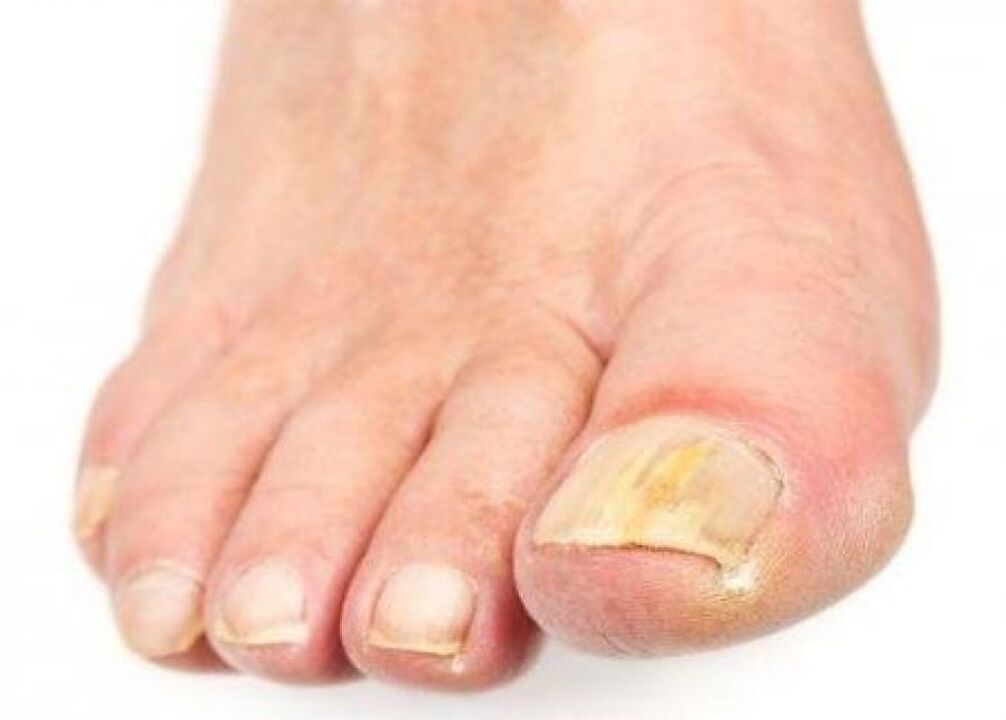
The more the disease progresses, the longer and harder it is to get rid of. If in the initial normotrophic phase it is possible to cure onychomycosis with the help of traditional medicine, then in the last stages it is often necessary to resort even to removing the affected nails by surgical methods.
Symptoms
In order to start treatment on time, it is necessary to understand how onychomycosis of the nail manifests itself at each stage.

In the initial phase, the main signs of nail fungus are redness of the skin in the interdigital zone, followed by mild peeling and itching. After that, the symptoms of the fungal infection develop in the following sequence:
- the crease of the nail turns red, swells and becomes painful,
- the nail begins to change color from dirty yellow to black, depending on the type of pathogen,
- stains, grooves, tubercles and streaks appear on the surface of the board,
- the nail thickens and peels,
- white mass accumulates in the subungual space, emitting an unpleasant odor,
- the keratinized nail plate begins to disintegrate at the edges,
- the nail peels off the bed completely and is discarded.

Feet affected by nail fungus can look extremely uncomfortable for others, so the patient is forced to hide them, which is especially difficult in the warm season. In addition, current onychomycosis causes complications.
What is a dangerous disease
The unwillingness of many patients to see a doctor in the early stages or the inability to recognize the first symptoms of onychomycosis leads to its transition to a chronic form that can be a disease for life. At the same time, with normal immunity, the fungus will "freeze" at a certain level, and any of the above-mentioned provoking factors can transfer the disease back to the active phase.
The following categories fall into the risk group for complications from fungal nail infections:
- children under 12 years,
- pregnant,
- women during lactation,
- people of the older generation.
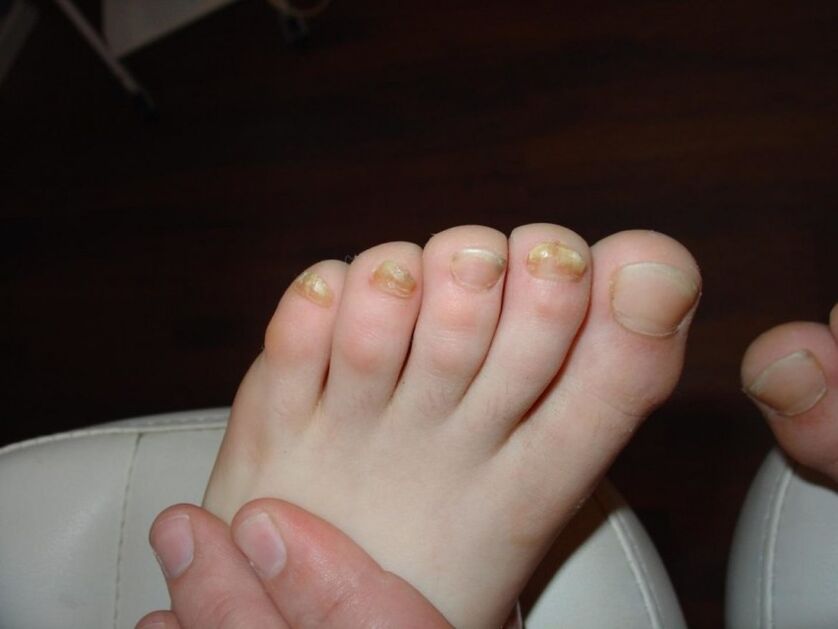
Against the background of reduced body defenses in these people, the disease will pass quickly, which will lead to further weakening of immunity and the following possible consequences:
- allergic reactions to bronchial asthma,
- worsening of the course of chronic diseases of internal organs,
- intoxication of the body due to the penetration of toxins into the blood,
- dysbacteriosis,
- the appearance of new foci of inflammation on the skin,
- nervous system disorders, psychological problems.
Since mycosis of the nails refers to infectious diseases, not only the sick person, but also all his personal belongings are a constant source of infection for others. If onychomycosis is detected in a woman during pregnancy, there is a danger that the unborn child will be born with a predisposition for allergies.
Diagnosis
Fungal diseases of the skin and nails are treated by dermatologists or mycologists. For consultations, you can contact an outpatient clinic or dermatovenereological dispensary, where these specialists receive.
After the interview with the patient, the doctor will be able to make a picture of the appearance and development of the disease. The following measures will help in making an accurate diagnosis and prescribing the most effective treatment:
- visual inspection of affected nails with Wood's ultraviolet lamp,
- taking pieces of skin and nails for examination,
- general blood and urine tests.
Biomaterial obtained as a result of scraping is sent to the laboratory, where it is studied under a microscope, which allows to determine the fungal nature of the disease.
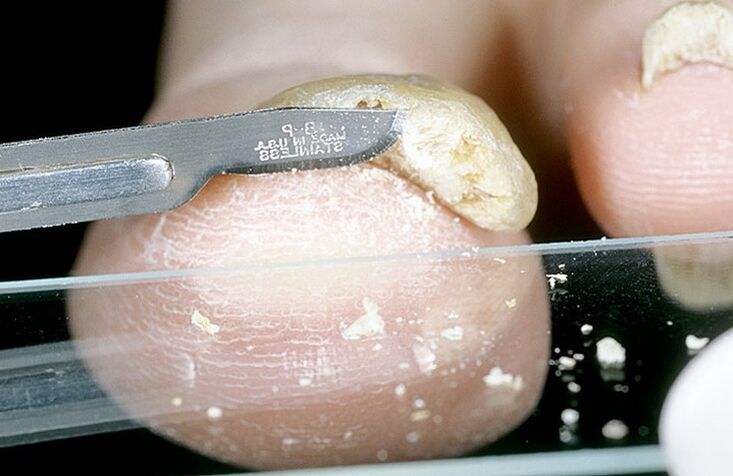
In order to clarify the type and strain of pathogenic microorganisms, fungal cultures are placed in a nutrient medium and create optimal conditions for their development. After 10-14 days, according to the type and shape of the colonies, it is possible not only to identify the pathogen, but also to determine its reaction to the most common drugs.
PCR (polymerase chain reaction) is considered to be the fastest and most accurate method. The biomaterial is processed with special enzymes that enable the study of the fungus at the DNA level. As a result, the type of pathogen is determined and its exact description is given.
Based on the above procedures, the patient is given a final diagnosis and an optimal scheme is made for the removal of fungi as soon as possible.

Treatment
Dermatologists promise a positive prognosis for onychomycosis only if the patient strictly follows all their prescriptions and recommendations.
In most cases, complex treatment is carried out, which includes the use of external ointments, creams and varnishes, oral antifungal drugs and alternative methods of therapy.
Keratolytics are used to soften and remove the affected nail plate. You can also get rid of the manifestations of fungal infection with the help of special varnishes.
In cases when the fungus on the nails has passed into an advanced phase or there is a risk of developing a secondary infection, which can be caused by pathogenic bacteria that have entered the affected areas, oral antifungal antibiotics are prescribed.
You can speed up the healing process by using traditional healers at home. The most effective, according to patients, are the following procedures:
- baths with baking soda or decoctions of medicinal herbs,
- apple cider vinegar lotion,
- compresses with celandine tincture,
- fats based on propolis and other bee products.
To destroy pathogenic microorganisms, before applying antifungal drugs, you can treat your nails with essential oils of cinnamon, cloves, fir, oregano or lemon.
Many dermatology centers offer nail fungus removal with a laser beam. This procedure, which allows you to quickly and painlessly get rid of the affected nail plate, is performed on an outpatient basis.

How can you get the fungus
Onychomycosis is a contagious fungal disease that is easily transmitted from person to person through household contact.
This usually happens like this:
- when walking barefoot in public places with high humidity - saunas, spas, gyms, swimming pools, on the beach,
- when you try on or wear someone else's shoes or socks,
- through bedding, towels, laundry towels, brushes and other personal items.
When visiting a manicure salon, it is necessary to pay attention to the disinfection of tools, because in many cases, the fungal infection is caused by the fault of unscrupulous employees of beauty salons.

Prevention
To prevent pathogenic fungi from multiplying even when they get on your nails or skin, you need to take care of your health and strengthen your immune system by following these recommendations:
- Reject bad habits.
- Keep fit.
- Spend more time outdoors.
- Balance your diet by including foods that contain nutrients and vitamins.
- Adhere to personal hygiene.
- Cure all chronic diseases in a timely manner.
- Wear quality shoes and socks that do not restrict or float your feet.
- Shoes used in the pool, gym or on the beach should be regularly treated with disinfectants.
If you notice incomprehensible changes on the skin or nails, it is necessary to make an appointment with a dermatologist in order to start treatment as soon as possible and get rid of the fungus as soon as possible.
























